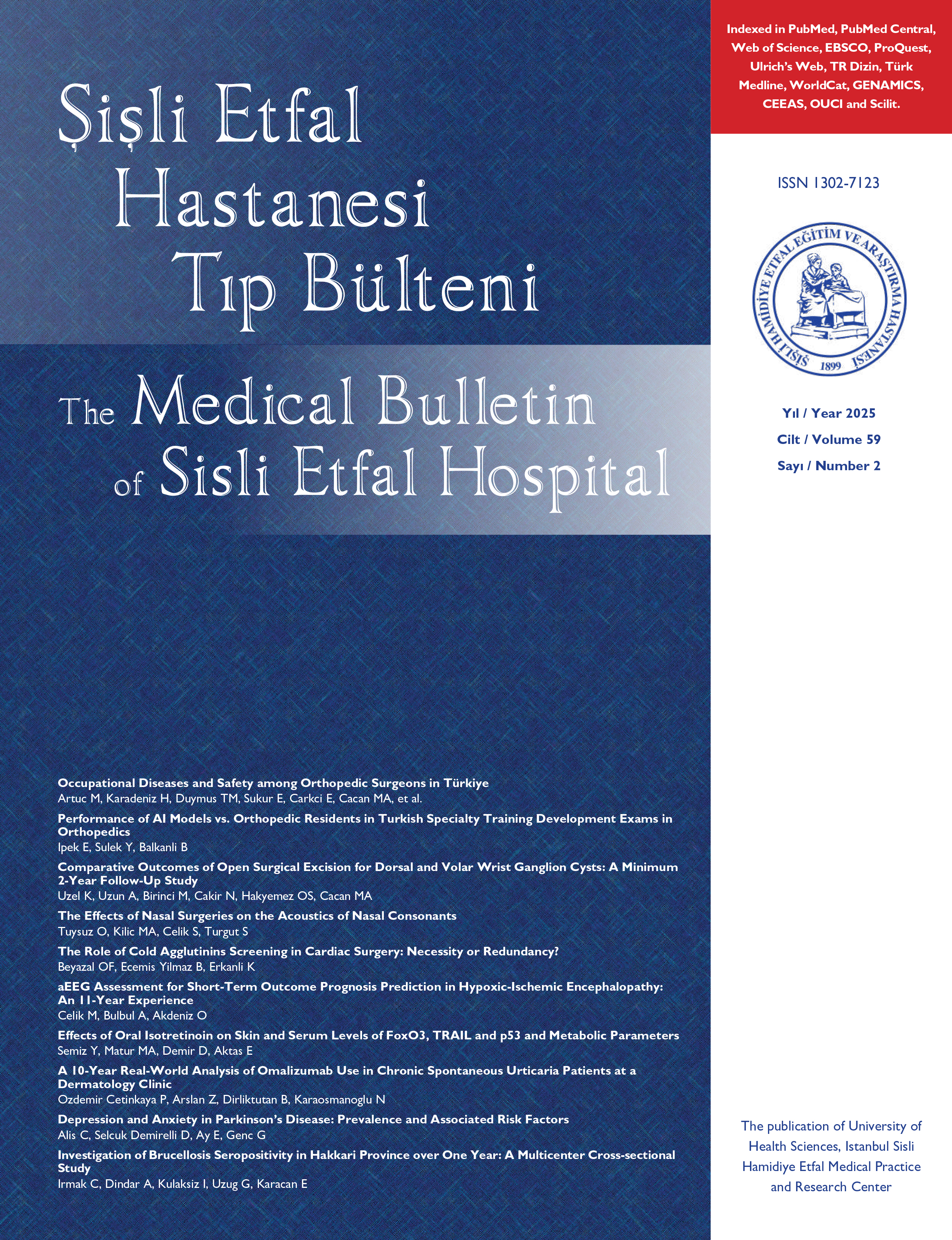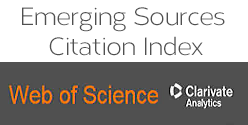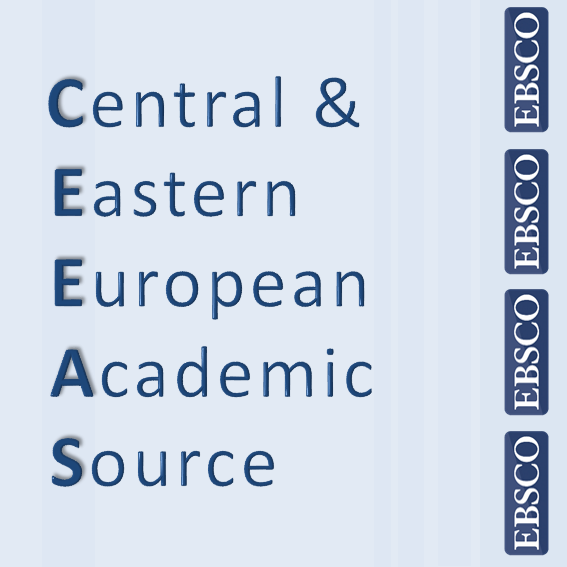
Volume: 37 Issue: 1 - 2003
| ORIGINAL RESEARCH | |
| 1. | Obstructive sleep apnea syndrome (OSAS) Suat Turgut Pages 7 - 12 Abstract | |
| 2. | The microbiologic effect of digital cervical examination Ahmet Varolan, Ali Yazgan, Aslıhan Arıöz, Ayşin Aras Altın, İnci Davas Pages 13 - 16 Objective: The purpose of this study was to determine whet¬her digital examination introduces vaginal organisms into the cervix. Study Design: Thirty-five women with reported ruptured membranes at >34 week gestation underwent a sterile specu¬lum examination and a standardized, semiqualitative, semi- quantitative endocervical culture before and immediately af¬ter digital examination. Results: Cultures taken before digital examination demonst¬rated a mean of 2.8+1.7 different types of organisms, whereas cultures taken after digital examination demonstrated a mean of 4.4±1.5 different types of organisms (p<0.0001). Twenty eight patients (80%) had heavier growth or a greater number of different organisms in the post examination culture than in the pre examination culture. The state of the fetal membranes (ruptured as opposed to intact) did not alter these relations. Conclusion: An immediate effect of digital examination is the introduction of vaginal organisms into the cervical canal. |
| 3. | Surgical treatment of benign biliary strictures Mehmet Mihmanlı, Halil Coşkun, Ali Kalyoncu, Uygar Demir, Tülay Eroğlu, Yasin Duran Pages 17 - 21 Objective: Current surgical therapy and literature for the patients with benign biliary stricture were looked over. Study Design: Three patients with benign biliary stricture, whom sended to our clinic were evaluated due to etiology, stricture level, biochemical findings, surgical treatment and complications. Preoperatively, abdominal ultrasonography, computed tomography, magnetic rezonans cholangiopancreaticografi were applied to all patients. Results: Bismuth Type-ll bilier stricture were determined in every patients and Roux en Y hepaticojejunostomy with transanastomotic stent were performed. There wasnt any problem in their controls. Conclusions: For the treatment of benign biliary stricture, surgical treatment and Roux en Y type hepaticojejunostomy have still gold standard. |
| 4. | Comparison of chemotherapy protocols in NSCLC Ö. Maral, D. Karaçetin, B. Yücel, Ö. Aksakal, D. Özcan, Y. Başer, O. İncekara Pages 23 - 25 Objective: In spite of surgery, chemotherapy and radiotherapy, median survival in NSCLC is about 8 to 10 months. Thus alternative regimens are heeing tried. In this study we aimed to evaluated different chemotherapy regimens to their effectivies and tolerability. Study design: The years of 1996-1999, 235 NSCLC patients who we are treated and followed up more than 6 months in Sisli Etfal Hospital, Radiation Oncology clinic are evaluated. Results: The patients are compared, for the time to progression, Survival and side effects. 62 patients were received ICE, 67 patients were received cisplatinum and etoposide, 98 patients were received cisplatinum+vinorelbine+gemcitabine and 8 patients were received oral etoposide in 6 cycles. Chemotherapy was given after surgery and/or radiotheray. The time during the followed up métastasés were seen; 13 patients in ICE arm, 15 patients in cisplatinum+etoposide arm and. 21 patients in cisplatinum+vinorelbine+gemcitabine arm. Exitus was seen 41 patients in ICE arm, 36 patients in Cisplatinum+etoposide arm, 64 patients in cisplatinum+vinorelhine+gemcitabine arm and 4 patients in oral etoposide arm. The time to progression was 4.5 months in ICE arm, 4.1 months in cisplatinum+etoposide arm, 4 months in cisplatinum+vinorelbine+gemcitabine arm. Median survival was 11.1 months in ICE are, 12.2 months in cisplatinum+etoposide arm, 13.6 months in cisplatinum+vinorelbine+gemcitabine arm. (p: 0.11) There was not seen any toxicides WHO grade 3-4. There was no any patients who died during the chemotherapy arm, 36 patients in ci.splat.inum+etoposide arm, 64 patients in cisplatinum+vinorelbine+gemcitabine arm and 4 patients in oral etoposide. The time to progression was 4.5 months in ICE arm, 4.1 months in cisp- latinum+etoposide arm, 4 months in cisplatinum+vinorelbine+gemcitabine arm. Median survival was 11.1 months in ICE are, 12.2 months in cisplatinum+etoposide arm, 13.6 months in cisplatinum+vinorelbine+gemcitahine arm. (p: O.llJThere was not seen any toxicides WHO grade 3-4. There was no any patients who died during the chemotherapy. |
| 5. | Before and after dialysis antithrombin III levels in patients on continuous hemodialysis Fatma Turgay, Şebnem Ciğerli, Bahar Türkmen, Nezaket Eren Pages 26 - 29 Objective: Both bleeding tendency and thrombotic complica¬tions are seen together in advance renal failure. Because oj the blood contacts on artificial surface during hemodialysis the activation of platelets and clotting factors lead to clot for¬mation in the extracorporeal circuit and this still remains as a potential problem. Patients undergoing regular hemodialysis are subject to height risk of thrombotic complications. The low levels of antithrombin III play a role with the genesis oj these complications. AT III is a major inhibitor of blood co¬agulation and hereditary deficiency is associated with venous thrombotic disease. We measured plasma AT III, fibrinojen, active partial thromhoplastine time (aPTT) and protrombin time (PTT) in order to investigate the activation of coagulati¬on before and after dialysis in patients with chronic renal fa¬ilure undergoing regular hemodialysis. Study Design: Patient group was 50 people and control gro¬up was 20 people. We determined AT III via cromogenic substrat method, by using Hitachi-717 otoanalyzer produced by Boehringer Mannheim. Results: We found the mean value for AT III activity 103,8%±8,85 in healthy controls. The mean values for AT III before dialysis and after dialysis were respectively 84,56%±I3,0 and 99%±J4,12 in patients with chronic renal failure. Conclusions: As compared with the healthy controls, the pa¬tients with chronic renal failure had significantly lower (p: 0.000) AT III activity before dialysis and significantly inc¬reased AT III activity after dialysis, (p: 0.000) |
| 6. | Importance of lipid peroxides in pathogenesis of preeclampsia Nezaket Eren, Şebnem Ciğerli, Berna Aslan, Ela İnan Pages 30 - 34 Sisli Etfal Hospital, Biochemistry and Clinical Biochmistry Preeclampsia is an endothelial disease of which pathogenes and etiology is still an open question. Today, preeclampsia the major reason of fetal immaturity, premature births ar, maternal deaths. Reasons of the endothelial damage in preei lampsia are low blood protacycline levels, low plathelet ci unts, increased lipid peroxidation. This leads to exceed th capacity of the antioxidant systems of the body. The aim i the study was investigate the reletionship between plazma I pid peroxide level and pathogenesis of preeclampsia. Oi study groupconsisted of 40 preeclamptic preganacies and 2 healty pregnant women, whom we have primarily measure plasma lipid peroxide level and secondarily measured serui cholestrol, triglyceride, uric acid, total protein, albumin, bit od plathelet count, hematocrit, and fibrinogen levels. We use Thiobarbituric acid method. In this methon malodialdehidt end product of the lipid peroxidation, reacts with thiobarbut, ric acid and produces pink reaction end product. We have observed that plasma lipid peroxide level showed blood pressure dependent increase, where both diastolic an systolic blood pressures were highly correlated with lipid pe roxside levels (p<0.001, rl= 0.79, r2= 0.83). We have als. observed that lipid peroxide levels in preeclamptic prcgnanci es were significantly higher than that of the healty pregnar subjects (p<0.0001). When we clasified the peeclamptic pati ents according to the severity of the desease, as mild and se vere, the higher increased was found in the severe preeclamp tic group. Considering the information that in preeclamptic patients li pid peroxides indirectly caused endothelial damage by affec ting the prostaglandin metabolism, distrupt the platele membrane and lead to vasocontriction. We have conferrei that, lipid peroxides may make a contribution to the develop ment of disorders primary symptoms that is hipertention. |
| 7. | Comparison of hemodynamic and recovery characteristics of fentanyl and remifentanyl in tiva during intracranial procedures Sabriye İmamoğlu, İnci Paksoy, Sibel Oba, Surhan Çınar, Özgür Özbağrıaçık, Levent Yılmaz, Metin Bektaş Pages 35 - 43 Objective: During anesthesia, we investigated the infusion e- mifentanyl a very short effective opioid promides or not, eno¬ugh hemodynamia and short postoperative recovery in intrac¬ranial procedures compared with fentanyl, a moderate opi¬oid. Study Design: After the approval by the Medical Ethics Com¬mittee, 30 patients in ASA I-II were obtained in to study. TIVA was done with fentanyl / propofol and remifentanyl / propofol to Group I and II respectively after required monitorisations. The hemodynamic measurements of patients were recorded from beginning of anesthesia until fifth minutes postoperative extubation. Recovery was assessed with Ramsey Scores. Results: Mean arterial pressure was found lower than begin¬ning in remifentanyl group during the period from induction until surgical incision, but it was significantly higher in fen¬tanyl group. Heart rate significantly decreased in induction and continued low during operation. No significant difference was seen on heart rate in fentayl group when compared to be¬ginning. There was not any difference in Ramsey Scores bet¬ween groups. (pO, 05) The dose of propofol was sign ificantly higher in fentanyl group when compared with remifentanyl group. (pO, 05) Conclusion: Remifentanyl was thought as a preferable agent in intracranial procedures because of it. inhibits reflex. Responses as pain stimulus, hypertension, tachycardia and has no accumulative affect, and has short orientation period and is cost effective due to less hypnotic requirements. |
| 8. | Surgical approach to thorax injuries Ali Kalyoncu, Uygar Demirkıran, Halil Coşkun, Mehtap Dinç, Tülay Eroğlu, Mehmet Mihmanlı Pages 45 - 49 Objective: In this study, the cases with thoracic trauma whom had applied to a training hospital were evaluted and morbi¬dity and mortality rates of the injury were def ined. Study Design: Between January 1995 and June 2001, 146 patients with thoracic trauma whom applied to Sisli Etfal Training and Research Hospital Surgical Emergency Unit were evaluated retrospectively due to age, sex, type of injury, clinical symptoms, therapy, morbidity and mortality rates. Results: Thoracic trauma occured in 105 cases (72%) by pe¬netrating injury and in 41 cases (28%) by blunt mechanisms. In 29 cases (20%) isolated haemothorax, in 66 cases (45%) isolated pneumothorax and in 51 cases (35%) haemopne- umothorax were established. 133 cases (91%) were treated with tube thoracostomy and thoracotomy required in 13 cases (9%). Additional abdominal injury was established in 14 ca¬ses (9,5%). In post-operative period, complications were oc¬cured in 20 patients. The most common complications were pneumonia and athelectazia. Morbidity were observed in 4 cases. Conclusions: As a conclusion, we have considered that ideal approach to cases with thorax injuries; first step theraphies should made in trauma centers, advanced studies and theraphies should made in thorax surgery centers. |
| 9. | Control of pain with patient control analgesia following-up major abdominal cancer surgery Ayda Başgül, Levent Yılmaz, Ayşe Hancı, Sibel Oba, H. Fatih Korkmaz Pages 50 - 53 Objective: The aim of the study was to compare interr, IV tramadol dose regimens with and without a mainte tramadol infusion in the treatment of postop eratifpain. Study Design: Thirty six patients (aged between 45-82 ASA class 3,4) undergoing major abdominal cancer si were entered in to the trial. It was given general anaes and patients were divided into two group postoperativ group 1, only PCA was given and in group 2 both PC. IV infusion of 5 mg/h tramadol were given. ALL of the ents demand dose was 20 mg tramadol no loading dos used, lockout time was 15 min. The results of the two g when the patients extubated with VRS and 24 h after si with give point scale were compared by chi-square tes unpaired t-test. Results: Consumption of tramadon in group 1 was 4012 and in group 2 was 413.33 mg. There was no statistical rence between groups. There were sometimes moderate in 35 of 36 patients, only one patient have sometimes si pain suffering in the first 24 hours of postoperative. Conclusion: Both tramadol PCA and PCA plus tramad fusion produced sufficient analgesia with minimal side e in PCA after major abdominal surgery. |
| 10. | Effectiveness of preemptive epidural neostigmine in patient controlled epidural analgesia after abdominal hysterectomy Fidan Aygün, G. Ulufer Sivrikaya, Ayşe Hancı, Melahat Karatmanlı Erol, Ayda Başgül Pages 54 - 59 Objective: In our study we aimed to evaluate the postopi ve analgesic efficacy of preemptive epidural neostigmine Study Design: After the approval by the Medical Ethic < mittee, 45 patients in ASA I-II aged between 40-65 years included into the study. 10 ml 0.9% NaCI solution in Grc 0. 5 mg neostigmine in Group II, 0.5 mg neostigmi.ne+2. bupivacaine in Group III were administered epidurally 21 nut.es before induction. Standard general anaesthesia applied to the patients. Mean arterial pressure (MAP), i rate (HR), peripheral oxygen saturation were recorded / peratively. Patient controlled epidural analgesia was use postoperative pain management. MAP, HR, pain evciliu with Visual Analogue Scale (VAS), adverse effects at post rative I., 2., 6., 12., 24. hours, total analgesic consumj for 24 hours were recorded. Students t test and ANOVA used for the statistical analyses. P<0.05 was considered nificant. Results: MAP, HR values were not significantly differen. and postoperatively. VAS, total analgesic consumption frequency of adverse effects were lower in Group III v compared with other two groups. Conclusion: Preemptive epidural neostigmine decrease toperative pain and analgesic consumption when comb with bupivacaine. We suggest that, neostigmine and I anaesthetic combination can be a good choice (for post rative analgesia) after abdominal hysterectomies. |
| 11. | Toe to thumb transfer in traumatic amputation Kemal Uğurlu, Ümran İleri, Ayşin Karasoy, Ercan Çakmak, Lütfü Baş Pages 60 - 63 Loss of finger in a hand is a serious loss from point of functional and aesthetic problem. Forty percent of all function require a healty thumb. Aim of thumb reconstru is to constitute a thumb which has an ideal length and carance with maximum stability, motion ability and sense Great toe and second toe are the most appropriate alter ves which have these properties for achievement of the fuonal, sensational and aesthetic goals. Left second toe transplanted to right thumb stump of a male patient who 26 years old and whose right thumb was avulsed 7 month in an accident. A satisfying result regarding the oriy length, sensation and cover restoration and cosmetic het was obtained postoperatively. |
| 12. | Aspiration pneumonia due to congenital maxillopalcıtomandibular fusion (A case of difficult intubation) Sibel Oba, İnci Paksoy, Kemal Uğurlu, Levent Yılmaz, Oya Hergünsel, Sabriye İmamoğlu Pages 64 - 67 A there years old boy was admitted to our department after an emergency tracheotomy performed at Emergency Unite; because of alteration of his consciousness and cyanosis. At initial examination micrognatia and underdeveloped growth were observed. There was only ~1 mm of mouth opening. 150/min heart rate, 80/50 mmHg arterial blood pressure, tachypnea (40/min) were noted. The arterial blood gas analysis showed hipoxia and hipercapnia. Because of aspiration pneumonia and acute cardiac failure, the patient was ventilated and treated with antibiotherapy, bronchodilatators and digoxin. After 15 days of treatment the patient had an osteotomy because of maxillopalatomandibular fusion and ~1.5 cm mouth opening was obtained. Later, tracheotomy was decanulated. Maxillopalatomandibular fusion is rare anomaly which presents difficult intubation problem. Our case constitues an example of successful intensive care treatment in maxillopalatomandibular fusion anomaly. |
| CASE REPORT | |
| 13. | Type 1 Neurofibromatosis presenting with multiple neurofibromas Ahmet Mesrur Halefoğlu, Muhammet Acar Pages 68 - 70 Neurofibromatosis type 1 is the most frequent form of neuro-fibromatosis and is characterized by the presence of at least two neurofibromas and 6 or more cafe au lait spots although it does have other diagnostic criteria. We showed a typical neurofibromatosis type 1 case which presented multipl neurofibromas in the right sciatic region, sacral nerve roots, both thigh regions, posteriorly localized to the seminal vesicle and scattered subcutaneously. We emphasized that magnetic resonance imaning is very important showing and characterizing for neurofibromas in terms of revealing their typical high signal intensity on T2 weighed images and demonstrating the relationship between the mass and nerves |



















